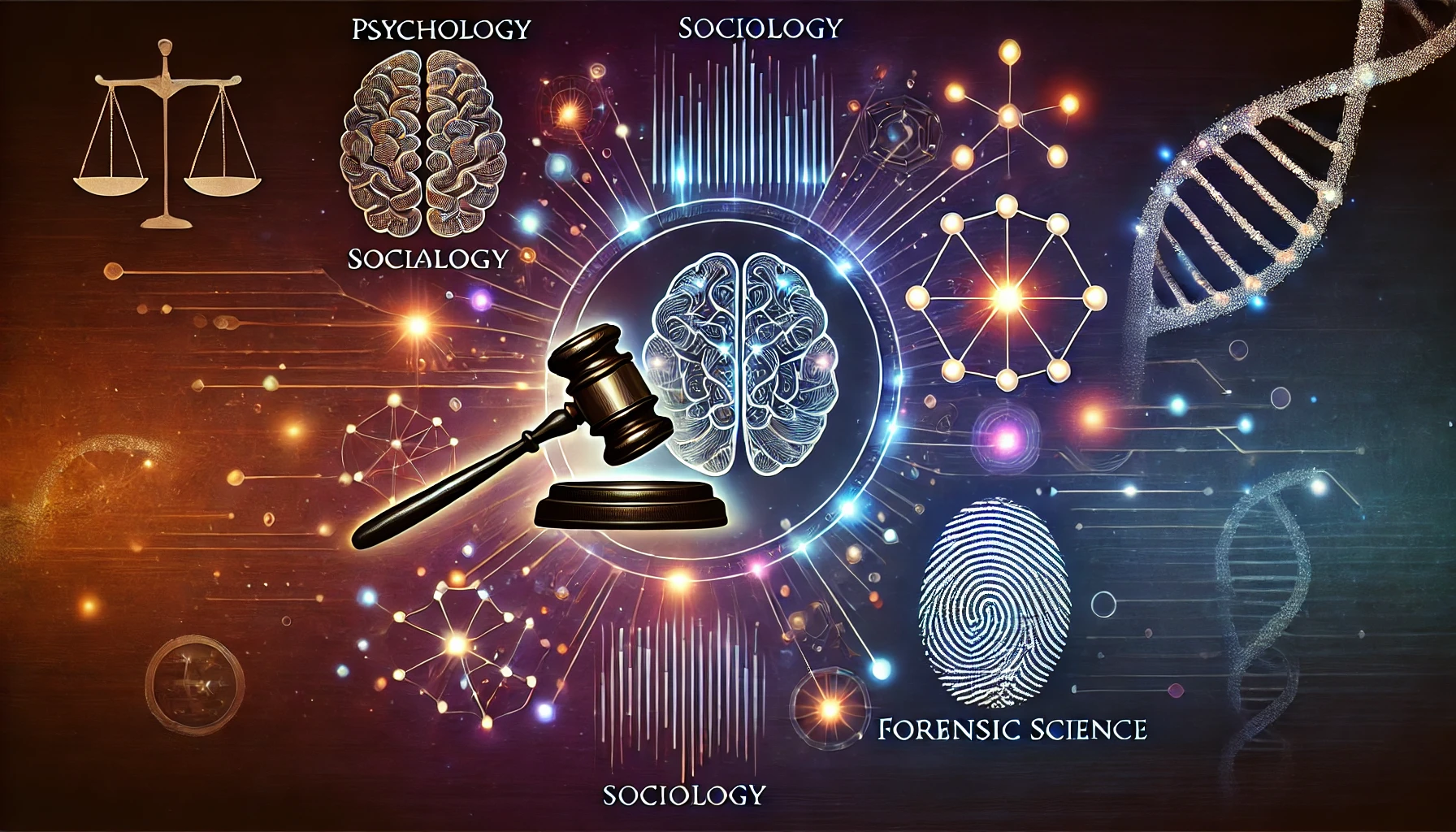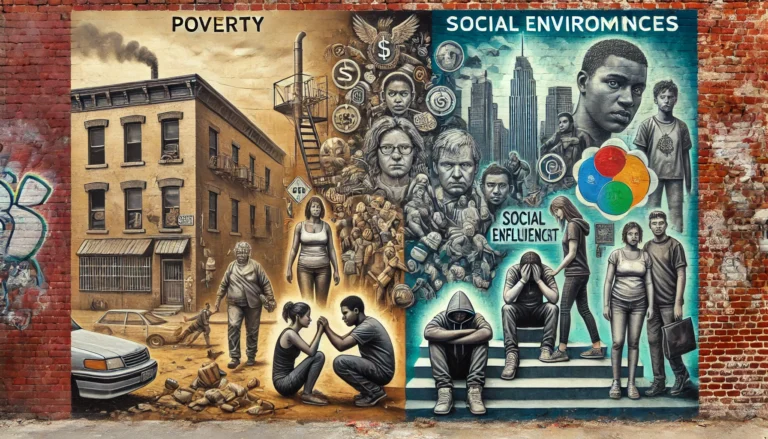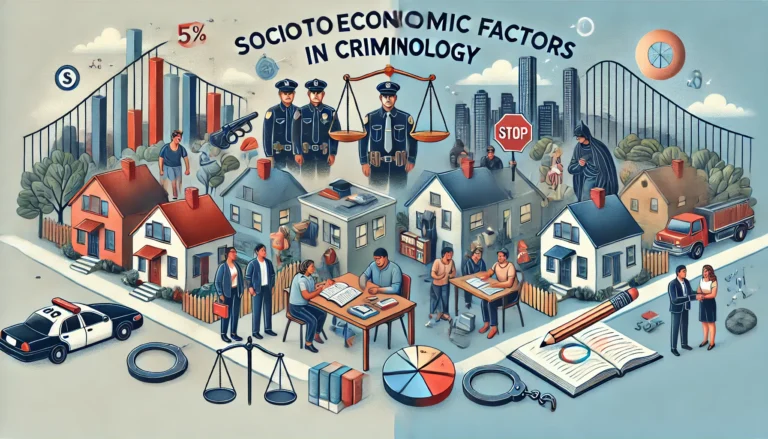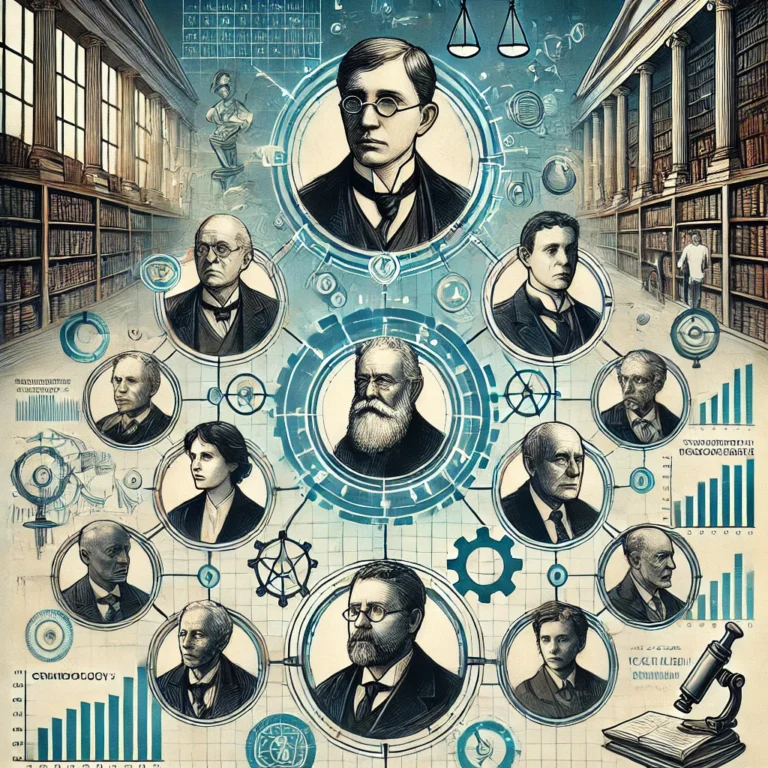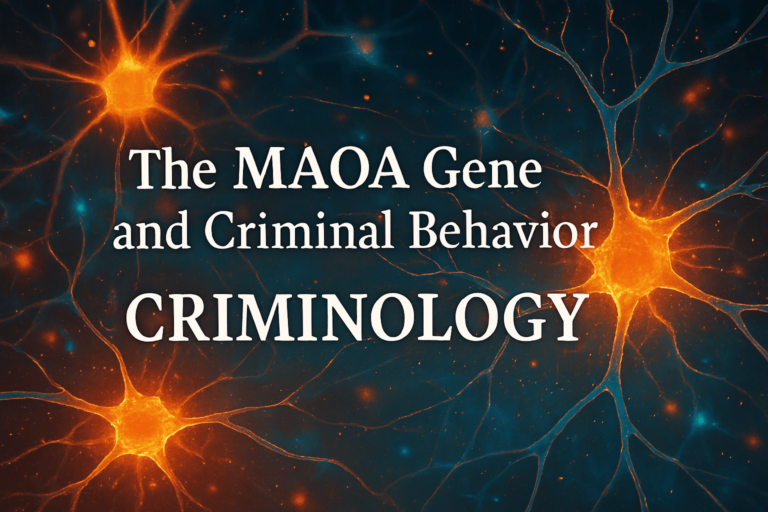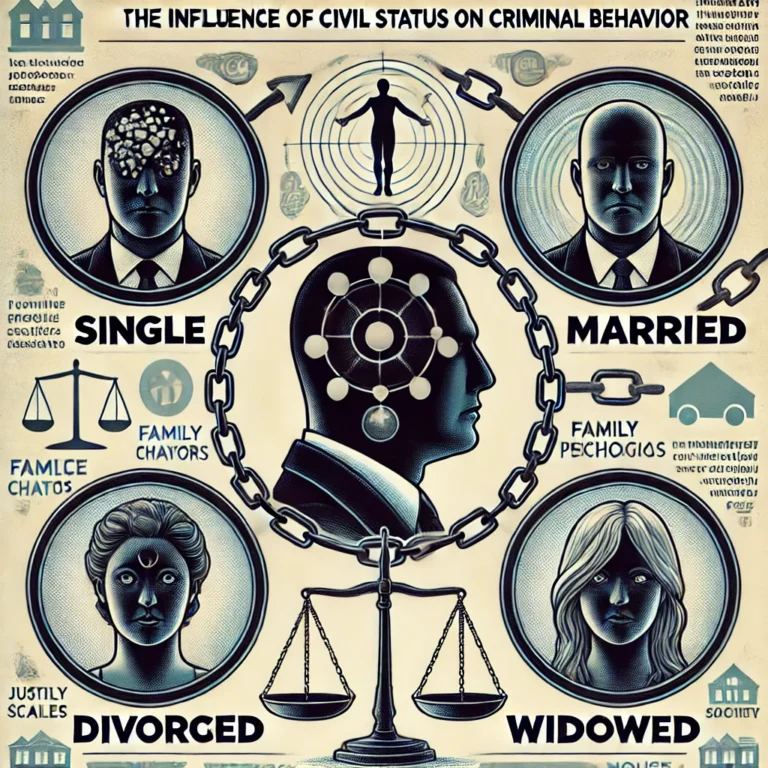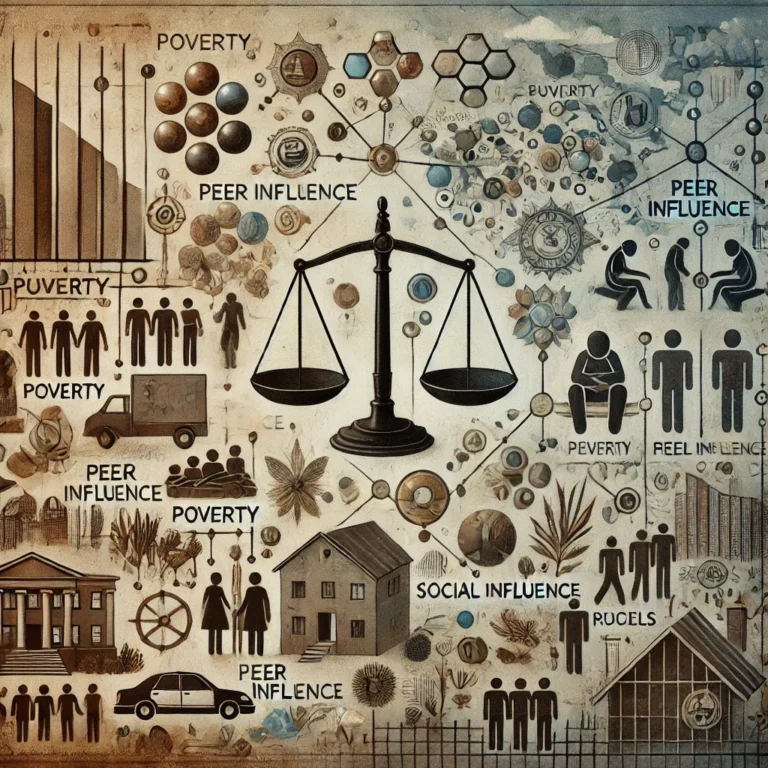Criminology and Other Sciences: An Integrated Relationship for Understanding Crime
Criminology, as a multidisciplinary field, seeks to understand the complexities of criminal behavior, the causes of crime, and the societal impacts of criminal acts. It does not operate in isolation but intersects with numerous other scientific disciplines that help illuminate various aspects of crime. This integrative approach allows criminologists to explore criminal behavior from a range of perspectives, providing a more comprehensive understanding of why crimes occur, who commits them, and how they can be prevented. In this article, we will examine the relationships between criminology and other key scientific fields such as psychology, sociology, law, biology, and economics, exploring how each discipline contributes to the broader understanding of criminal phenomena.
Criminology and Psychology: Understanding the Mind Behind Crime
Psychology is one of the most important fields that intersect with criminology. Psychological theories of crime focus on the mental processes and emotional states of individuals that may predispose them to criminal behavior. This connection is crucial for understanding not only the behaviors of criminals but also the underlying psychological conditions that may drive such behavior.
- Psychological Theories of Crime
The relationship between criminology and psychology is most apparent in the study of criminal behavior from a psychological perspective. Sigmund Freud, the father of psychoanalysis, suggested that unconscious desires, childhood traumas, and unresolved emotional conflicts could influence individuals to engage in criminal acts. Later psychologists, such as Hans Eysenck, expanded on the role of personality traits, arguing that individuals with certain traits, such as impulsivity or a lack of empathy, are more likely to engage in criminal behavior. - Psychopathology and Criminal Behavior
In more recent years, criminologists have explored the role of mental disorders and personality disorders, such as antisocial personality disorder and psychopathy, in criminality. Psychopaths, for example, often exhibit traits such as a lack of remorse, emotional detachment, and manipulative behavior, which are often associated with violent and criminal activities. Criminologists and psychologists collaborate to develop diagnostic tools and interventions that can help identify individuals at risk of committing crimes due to underlying psychological conditions. - The Role of Therapy and Rehabilitation
Psychological theories also influence the rehabilitation of criminals. Psychological interventions, such as cognitive-behavioral therapy (CBT), are widely used in correctional facilities to help offenders change their thought patterns and behaviors. By understanding the psychological factors that contribute to criminal behavior, criminologists can advocate for more effective treatment and rehabilitation strategies.
Criminology and Sociology: The Influence of Society on Crime
Sociology plays a vital role in criminology, as it provides insights into the social structures, institutions, and processes that shape human behavior. Sociological theories of crime examine how societal factors such as social inequality, family structure, peer influence, and community dynamics contribute to the emergence of criminal behavior.
- Social Structure Theories
Sociologists like Émile Durkheim and Robert K. Merton argued that crime is not just an individual act but a reflection of the social conditions in which individuals live. Durkheim’s functionalism posited that crime is a natural and inevitable part of society, serving a functional purpose by reinforcing social norms and promoting social change. Merton’s strain theory, which suggests that individuals resort to crime when they cannot achieve societal goals through legitimate means, also emphasizes the link between social structures and crime. - Social Disorganization Theory
This theory, developed by Shaw and McKay, suggests that crime rates are higher in communities that lack strong social ties and institutions. In neighborhoods characterized by poverty, unemployment, and broken families, social control is weakened, leading to higher levels of criminal activity. The Chicago School of Sociology has significantly contributed to understanding the relationship between the urban environment and crime, highlighting the importance of community cohesion in reducing crime. - Cultural and Subcultural Theories
Subcultural theories, such as those proposed by Albert Cohen and Walter Miller, argue that certain groups within society may develop values and norms that conflict with mainstream societal expectations, leading to criminal behavior. For example, gangs and youth subcultures may promote delinquency as a way of achieving status or respect within their group, which may contribute to overall crime rates.
Criminology and Law: Understanding Legal Frameworks and Criminal Justice
The relationship between criminology and law is perhaps the most direct, as criminology provides the theoretical foundation for legal frameworks and criminal justice systems. Legal scholars and criminologists work together to evaluate how laws are created, enforced, and interpreted, and how effective they are in reducing crime and punishing wrongdoers.
- The Role of Criminal Law in Crime Prevention
Criminal law is designed to set out what constitutes criminal behavior and to establish the penalties for those who break the law. Criminologists and legal scholars contribute to the development of laws by studying trends in crime and recommending legal reforms. Cesare Beccaria, for example, was instrumental in advocating for reforms to criminal law that emphasized rationality, fairness, and proportionality in punishment. His ideas led to the development of the modern criminal justice system. - The Concept of Justice and the Application of Law
Criminologists also study the application of criminal law, focusing on issues such as fairness, bias, and discrimination in legal proceedings. Sociological and criminological theories have highlighted how certain social groups, particularly racial minorities and the poor, are disproportionately affected by the criminal justice system. The study of law and criminology together has led to critical analyses of how laws are enforced and the broader implications of law enforcement practices, such as policing, sentencing, and prison systems. - Restorative Justice and Legal Reforms
The relationship between criminology and law is also evident in the field of restorative justice, a movement that seeks to repair the harm caused by crime through reconciliation and rehabilitation rather than solely through punishment. Criminologists work with legal professionals to explore how restorative justice programs can be integrated into the criminal justice system to promote healing and reduce recidivism.
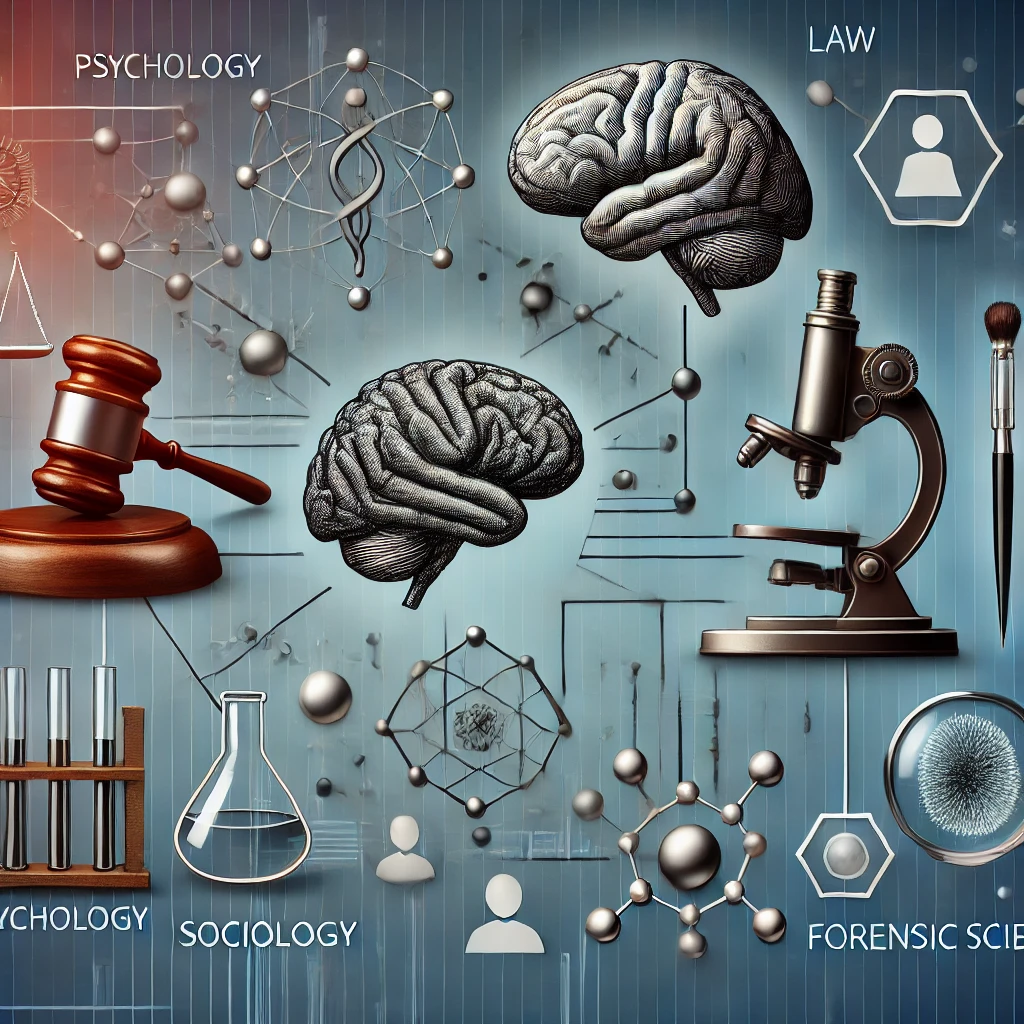
Criminology and Biology: The Role of Genetics and Neurological Factors in Crime
Biology, particularly the study of genetics and neuroscience, has become increasingly important in understanding criminal behavior. Biological theories argue that criminal behavior may be influenced by genetic predispositions, brain abnormalities, or hormonal imbalances. This connection between criminology and biology is essential for understanding the “nature” aspect of the classic nature vs. nurture debate.
- Genetic Factors and Crime
Twin studies and research into genetic inheritance suggest that there may be a hereditary component to criminal behavior. Some criminologists and geneticists believe that certain genetic traits, such as impulsivity or aggression, may predispose individuals to criminal behavior. While genetic factors alone do not determine criminality, they may increase the likelihood of engaging in criminal acts, particularly in conjunction with environmental stressors. - Neurocriminology: Brain and Behavior
Advances in neuroscience have opened up new avenues for understanding the relationship between brain function and criminal behavior. Neurocriminology explores how abnormalities in brain regions responsible for impulse control, aggression, and decision-making may contribute to criminal behavior. Research has shown that individuals with damage to areas such as the prefrontal cortex—the brain region involved in impulse control—may be more prone to violent or impulsive behavior. - Hormonal Influences
Hormones, particularly testosterone, have also been linked to aggression and violent behavior. Criminologists examine how hormonal imbalances, particularly in adolescence, may influence the likelihood of engaging in criminal activities. However, biological explanations for crime remain controversial, as they must be considered alongside environmental factors and social influences.
Criminology and Economics: The Economic Factors That Drive Crime
Economics plays a critical role in criminology, particularly when studying the causes of property crime, white-collar crime, and economic crime. Economic theories of crime often focus on the relationship between poverty, inequality, and criminal behavior.
- Rational Choice Theory and Economic Models
One of the key economic theories in criminology is rational choice theory, which suggests that individuals weigh the costs and benefits of committing a crime before making a decision. Criminologists who adopt this approach argue that crime can be understood as a result of individuals seeking to maximize their economic gains while minimizing risks, such as the likelihood of getting caught and punished. - The Influence of Economic Inequality
Sociologists and criminologists have long argued that economic inequality plays a significant role in fostering criminal behavior. Studies show that high levels of economic inequality within a society are associated with higher crime rates. This relationship is particularly evident in property crimes, such as theft and burglary, where individuals may resort to criminal acts to meet their economic needs when legitimate opportunities are limited.
Conclusion: A Holistic Approach to Understanding Crime
Criminology’s relationship with other sciences—such as psychology, sociology, law, biology, and economics—is fundamental to the development of a more complete understanding of crime. By integrating insights from these diverse fields, criminologists can create more effective crime prevention strategies, rehabilitation programs, and policies aimed at addressing the root causes of criminal behavior. The interdisciplinary nature of criminology allows for a deeper exploration of the many factors that contribute to criminal acts, ultimately leading to more informed and comprehensive approaches to justice.

